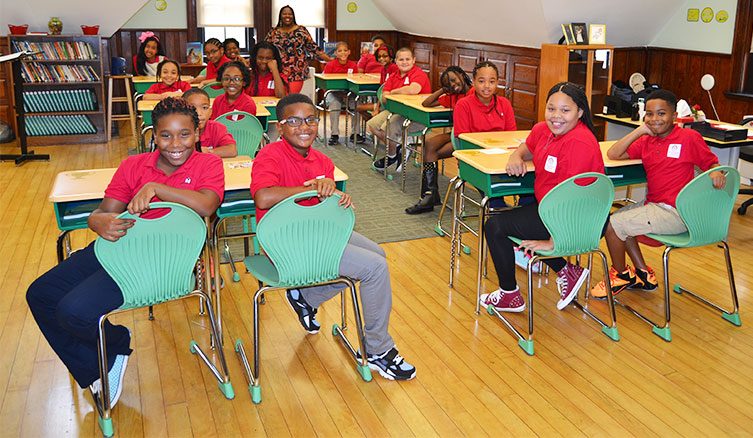Engaging Youth in School Facility Design
By Misty McFadden
Posted August 1, 2017 in Tomorrow's Classroom
“Tell me and I forget, teach me and I may remember, involve me and I learn”, said Benjamin Franklin. One outstanding, though often overlooked way in which teachers can involve students, is in the design of the classroom. As a designer or architect, leveraging students’ input and creativity can be a great way to designing a more engaging and functional classroom space.
The physical space where students spend 6 to 8 hours a day has immense effect on them.
Everything from the colors of the wall and the decoration, to the type and amount of light, and the way in which the furniture is arranged, can help make the space of the classroom more inviting.
If you were to invite students into the process of designing and decorating the classroom, rather than spending the weeks before schools starts, discussing with teachers and school administrators, and breaking your head over design ideas, the result would be more motivated students, more out-of-the-box and innovative thinking, and faster and more effective learning.
How can you involve students in the classroom design process and make it work?
Let it go. We know you’ve been doing this for years and planning the design of a space is your thing, but the first step in creating a creative classroom is to let go of control and give way to what the people who will actually be using the space, the students, want.
Ask the students what they want. What kind of colors do they want to see around the classroom, what kind of furniture would they like, what would make the space more inviting for them? Hold a brainstorming session and remind them that there are no bad ideas.
Don’t shy away from color. The fact that most classrooms are white doesn’t mean you can’t play with color. Color can be an outstanding tool in helping students learn new material, plus certain colors have been proven to have a calming effect. Talk with the students about deciding on a color palette and implement it throughout the classroom in “themed corners” and decor such as paint, accessories and even inspirational posters.
Create privacy nooks. Giving students a space they can call their own can give them a great sense of ownership and respect for the classroom. Create reading nooks where students can curl up when they need a little extra concentration.
Upcycle existing furniture. Get the students thinking of creative ways in which to use the existing furniture. Students often get tired of being in the same position for long periods of time, so switch things up a bit; cut the legs of a table to create a low table for sitting on the floor, or use a podium as a standing desk.
Divide and conquer. Break up the class into teams and each team can work on designing and decorating a different area of the classroom. Each team can present their best ideas to the rest of the class and they can all decide together. Think of yourself as a moderator rather than an almighty professional designer or architect.
Add personal touches. Let the students design their own name cards or lockers as a way to make the space truly inviting and their own.
Get an ok from higher-ups. A lot of schools may have a narrow mindset when it comes to decorating and rearranging classrooms. Use the students’ feedback as a starting point for negotiation in order to get approvals from school admins.
Find local help. Get the students to contact local businesses who may be able to donate materials, supplies and furniture.
Hold an open house. Once school starts and the makeover is complete, encourage the students to invite parents and school staff over, and let the students be proud of what they’ve accomplished.
When looking to design a classroom, it may help to approach it as you would the design of a home or office; you would get the input, needs and desires from your client, and then get to work. In the case of a classroom design, think of the students as your clients. After all, they are the ones who will be enjoying the finished product, and the more involved they are in the process, the more they’ll love the end result.
